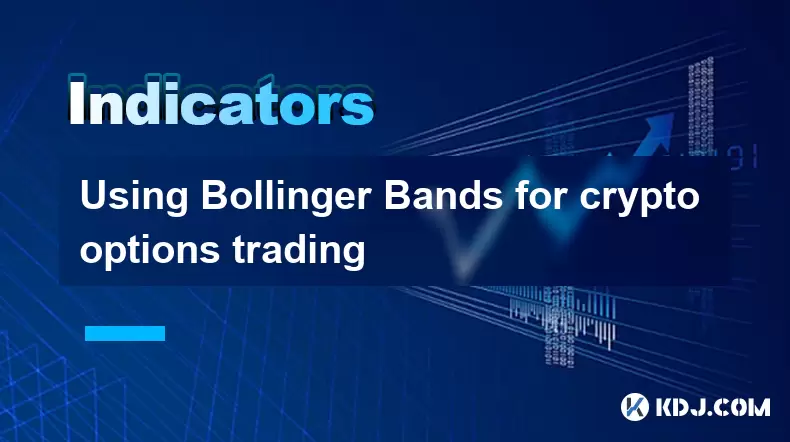-
 Bitcoin
Bitcoin $118100
-0.44% -
 Ethereum
Ethereum $3585
5.43% -
 XRP
XRP $3.434
5.65% -
 Tether USDt
Tether USDt $1.000
0.02% -
 BNB
BNB $743.8
3.89% -
 Solana
Solana $178.7
3.84% -
 USDC
USDC $1.000
0.03% -
 Dogecoin
Dogecoin $0.2381
12.81% -
 TRON
TRON $0.3270
3.62% -
 Cardano
Cardano $0.8315
4.93% -
 Hyperliquid
Hyperliquid $44.51
-4.42% -
 Stellar
Stellar $0.4710
1.52% -
 Sui
Sui $3.896
-2.51% -
 Chainlink
Chainlink $18.09
6.98% -
 Hedera
Hedera $0.2681
9.31% -
 Bitcoin Cash
Bitcoin Cash $516.7
4.83% -
 Avalanche
Avalanche $23.95
6.96% -
 Shiba Inu
Shiba Inu $0.00001490
5.67% -
 UNUS SED LEO
UNUS SED LEO $8.966
0.80% -
 Toncoin
Toncoin $3.294
4.39% -
 Litecoin
Litecoin $105.4
4.69% -
 Polkadot
Polkadot $4.356
5.30% -
 Uniswap
Uniswap $10.29
17.25% -
 Monero
Monero $327.9
-3.04% -
 Bitget Token
Bitget Token $4.942
4.33% -
 Ethena USDe
Ethena USDe $1.001
0.08% -
 Pepe
Pepe $0.00001348
2.17% -
 Dai
Dai $1.000
0.02% -
 Aave
Aave $320.8
0.58% -
 Bittensor
Bittensor $411.8
-4.07%
Using Bollinger Bands for crypto options trading
Bollinger Bands help crypto options traders identify overbought or oversold conditions, guiding entry and exit points for calls and puts.
Jul 17, 2025 at 06:14 am

Understanding Bollinger Bands in the Context of Crypto Options Trading
Bollinger Bands are a widely used technical analysis tool developed by John Bollinger, consisting of a simple moving average (SMA) and two standard deviation lines plotted above and below it. These bands dynamically adjust to price volatility, making them particularly useful for crypto options traders who rely on predicting price movements within specific timeframes.
In the volatile world of cryptocurrencies like Bitcoin and Ethereum, Bollinger Bands help identify potential overbought or oversold conditions, signaling when an asset might reverse direction. For options traders, this insight is crucial as it aids in determining entry and exit points for both call and put options.
Tip: The default setting for Bollinger Bands is 20 periods with two standard deviations, but crypto traders often tweak these settings based on the asset’s volatility.
How Bollinger Bands Work in Cryptocurrency Markets
The three components of Bollinger Bands — the middle SMA line and two outer bands — react to market conditions. When prices move closer to the upper band, it suggests strength and potentially overbought levels. Conversely, when prices approach the lower band, it indicates weakness and possibly oversold territory.
For options trading in crypto, understanding how these bands interact with price action can provide critical insights into expected volatility and potential breakouts. During periods of low volatility, the bands contract, signaling that a sharp move may be imminent. This contraction phase is especially important for trading binary or barrier options, where timing and volatility play key roles.
- Monitor contraction phases to anticipate breakouts.
- Observe price touches near bands to assess momentum.
- Combine with volume indicators to confirm breakout validity.
Applying Bollinger Bands to Call Option Strategies
When using call options in cryptocurrency trading, traders aim to profit from upward price movements. Bollinger Bands can serve as a guide for identifying bullish setups, especially when prices bounce off the lower band in an uptrend or during a reversal.
One effective strategy involves waiting for the price to touch or slightly breach the lower band and then rebounding back toward the middle SMA. This could indicate a potential upward movement, making it an ideal time to buy a call option with a short-term expiry.
- Look for bullish candlestick patterns at the lower band.
- Check for RSI divergence to confirm trend reversals.
- Set strike prices just above resistance levels identified through historical price action.
It's also essential to monitor the width of the bands, as expanding bands suggest increasing volatility, which can lead to larger price swings — a factor that affects option premiums and risk-reward calculations.
Using Bollinger Bands for Put Option Opportunities
For put options, where traders benefit from falling prices, Bollinger Bands help identify bearish signals when the price reaches or exceeds the upper band. A rejection at the upper band, especially in a downtrend, can signal a potential pullback, offering a strategic entry point for put buyers.
A typical setup includes:
- Price touching or crossing the upper band without strong follow-through.
- Candlestick formations indicating exhaustion, such as shooting stars or bearish engulfing patterns.
- Volume spikes confirming selling pressure.
Traders should consider placing put options with strike prices aligned with recent support zones to maximize profit potential while managing risk. Additionally, narrowing bands suggest decreasing volatility, which may result in smaller price moves — something to consider when selecting option durations.
Combining Bollinger Bands with Other Indicators for Enhanced Accuracy
While Bollinger Bands alone can provide valuable insights, combining them with other tools significantly improves their effectiveness in crypto options trading strategies. Popular complementary indicators include:
- Relative Strength Index (RSI): Helps confirm overbought or oversold conditions suggested by Bollinger Bands.
- Moving Average Convergence Divergence (MACD): Useful for spotting trend changes and momentum shifts.
- Volume Profile: Reveals areas of high interest and potential reversal zones.
By layering these tools, traders can filter false signals and focus on high-probability trades. For example, if the price touches the upper Bollinger Band and RSI shows overbought readings above 70, it strengthens the case for a bearish trade.
Important: Always backtest your combined strategies on historical data before deploying real capital in live markets.
Risk Management Considerations When Using Bollinger Bands
Even with accurate signals, risk management remains paramount in crypto options trading. Bollinger Bands can sometimes give misleading signals, especially during sudden news events or whale movements that distort normal price behavior.
To mitigate risks:
- Always set stop-loss orders, even for short-dated options.
- Avoid trading during low liquidity periods, which can cause erratic price action.
- Use position sizing techniques based on account size and risk tolerance.
Moreover, since options have expiration dates, timing becomes critical. Traders should align their use of Bollinger Bands with the option's time-to-expiration, ensuring they don’t hold positions expecting a move that may occur too late.
Frequently Asked Questions
Q1: Can Bollinger Bands be adjusted for different cryptocurrencies?
Yes, Bollinger Bands can be customized depending on the volatility of the crypto asset. More volatile assets like altcoins may require higher standard deviation settings or shorter time frames.
Q2: How reliable are Bollinger Bands during major news events in crypto markets?
Bollinger Bands may become less predictive during sudden news-driven spikes due to extreme volatility. It's advisable to combine them with news sentiment analysis or pause trading during such events.
Q3: Should I use Bollinger Bands alone or with other tools for options trading?
While Bollinger Bands are powerful, they work best when combined with other indicators like RSI or MACD to confirm signals and reduce false positives.
Q4: What time frame works best with Bollinger Bands for crypto options?
Shorter time frames (like 5-minute or 15-minute charts) are popular among day traders, while swing traders may prefer hourly or daily charts depending on their options' duration.
Disclaimer:info@kdj.com
The information provided is not trading advice. kdj.com does not assume any responsibility for any investments made based on the information provided in this article. Cryptocurrencies are highly volatile and it is highly recommended that you invest with caution after thorough research!
If you believe that the content used on this website infringes your copyright, please contact us immediately (info@kdj.com) and we will delete it promptly.
- Dogwifhat, Pepe, and Altcoin 2025: Meme Coin Mania or Real Utility?
- 2025-07-19 02:50:13
- Bitcoin: From Niche Crypto to Global Asset Dominating Crypto Finance
- 2025-07-19 02:50:13
- Coinbase System Upgrade: What It Means for Your Crypto
- 2025-07-19 02:30:13
- Riding the Crypto Whale: Bitcoin, Altcoins, and the $5 Trillion Dream
- 2025-07-19 02:30:13
- Bitcoin Core's Disk Fill Bug: Finally Squashed?
- 2025-07-19 02:35:13
- Coinbase (COIN) Soars to All-Time High: What's Next?
- 2025-07-19 00:30:12
Related knowledge

Advanced RSI strategies for crypto
Jul 13,2025 at 11:01am
Understanding the Basics of RSI in Cryptocurrency TradingThe Relative Strength Index (RSI) is a momentum oscillator used to measure the speed and chan...

Crypto RSI for day trading
Jul 12,2025 at 11:14am
Understanding RSI in the Context of Cryptocurrency TradingThe Relative Strength Index (RSI) is a momentum oscillator used to measure the speed and cha...

Crypto RSI for scalping
Jul 12,2025 at 11:00pm
Understanding RSI in the Context of Crypto TradingThe Relative Strength Index (RSI) is a momentum oscillator widely used by traders to measure the spe...

What does an RSI of 30 mean in crypto
Jul 15,2025 at 07:07pm
Understanding RSI in Cryptocurrency TradingRelative Strength Index (RSI) is a momentum oscillator widely used in cryptocurrency trading to measure the...

What does an RSI of 70 mean in crypto
Jul 13,2025 at 06:07pm
Understanding the RSI Indicator in Cryptocurrency TradingThe Relative Strength Index (RSI) is a widely used technical analysis tool that helps traders...

Does RSI work in a bear market for crypto
Jul 16,2025 at 01:36pm
Understanding RSI in Cryptocurrency TradingThe Relative Strength Index (RSI) is a momentum oscillator used by traders to measure the speed and change ...

Advanced RSI strategies for crypto
Jul 13,2025 at 11:01am
Understanding the Basics of RSI in Cryptocurrency TradingThe Relative Strength Index (RSI) is a momentum oscillator used to measure the speed and chan...

Crypto RSI for day trading
Jul 12,2025 at 11:14am
Understanding RSI in the Context of Cryptocurrency TradingThe Relative Strength Index (RSI) is a momentum oscillator used to measure the speed and cha...

Crypto RSI for scalping
Jul 12,2025 at 11:00pm
Understanding RSI in the Context of Crypto TradingThe Relative Strength Index (RSI) is a momentum oscillator widely used by traders to measure the spe...

What does an RSI of 30 mean in crypto
Jul 15,2025 at 07:07pm
Understanding RSI in Cryptocurrency TradingRelative Strength Index (RSI) is a momentum oscillator widely used in cryptocurrency trading to measure the...

What does an RSI of 70 mean in crypto
Jul 13,2025 at 06:07pm
Understanding the RSI Indicator in Cryptocurrency TradingThe Relative Strength Index (RSI) is a widely used technical analysis tool that helps traders...

Does RSI work in a bear market for crypto
Jul 16,2025 at 01:36pm
Understanding RSI in Cryptocurrency TradingThe Relative Strength Index (RSI) is a momentum oscillator used by traders to measure the speed and change ...
See all articles

























































































